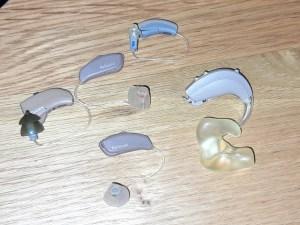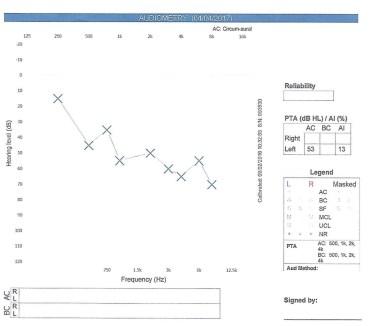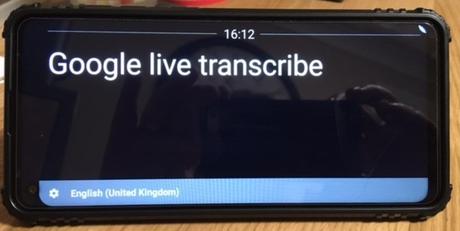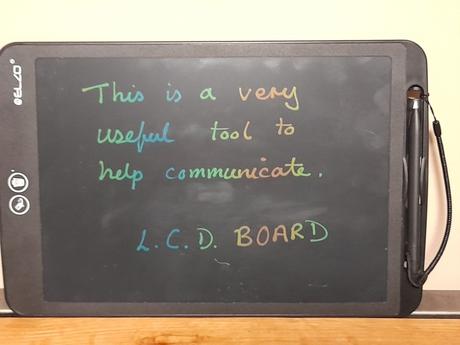The Progression of Hearing Loss in Superficial Siderosis
Hearing loss is one of the most common symptoms of Superficial Siderosis. For me, I’d say it was the first symptom I noticed; it wasn’t until five years after the hearing loss began that I had my Superficial Siderosis diagnosis.
How it Began
In my previous blogs, you might have read that I was a musician, and around 2011 I began struggling to hear at band practice. I was always very conscious of my hearing and wore earplugs to all the concerts I attended as well as our daily practice. My hearing loss started as a high frequency single pitched tinnitus. The tinnitus just didn’t seem to settle, although I did get the odd moment of quiet here and there. The next thing I noticed was that I was struggling to hear pitch correctly, my guitar always sounded like it was slightly out of tune, or there was a bit of distortion coming from the amplifier. My bandmates assured me that it sounded fine, but I was sceptical as this was not the case for me. I decided to buy a floor monitor to relay my guitar and vocals through. This turned out extremely useful to help get through band practice.
I recall watching Lord of The Rings and thinking there was an issue with the sound on the TV, but just like my amp at band practice, I was told this was not the case. Eventually, I decided to get my hearing checked at my local private hospital because there was at least a year’s wait on the NHS. The hearing loss was now causing me to say ‘what’ or ‘pardon’ much too often. It affected work where I was looking to progress as a team leader, and I struggled to hear at the daily meetings having to read the minutes/notes afterwards to understand what was going on fully.
Getting a Hearing Test
The ENT (Ear, Nose and Throat) doctor I saw at my local private hospital told me that he was a musician too, and I found it very refreshing to speak to someone who could fully understand my frustrations at band practice. I’d never had a hearing test before so had no idea what to expect from it. I was handed a buzzer which I had to press every time I could hear a pitch sounding in my ear through a set of headphones that I had put on. A series of pitches were played through the headphones of both low and high frequency. I found that the tinnitus was masking some of the higher tones, and I struggled to distinguish between the pitches and the tinnitus.
After the hearing test, the doctor told me I had minor bilateral (both sided) hearing loss. He referred me back to the NHS to get hearing aids to help compensate off the hearing loss and referred me to have an MRI scan to check my inner and middle ear. Due to the wait on the NHS, I had the MRI scan first, which showed no issues with my inner or middle ear, it was now time to wait for my appointment with the NHS to get some hearing aids fitted.
I found that my hearing and tinnitus had stayed the same for quite some time, it didn’t appear to be getting any worse, which was a relief for me as I was managing to get by. At the NHS appointment, I had a further hearing test that showed I still had minor bilateral hearing loss, and I was given a set of hearing aids tuned to my needs. Now that I was in the NHS system for my hearing issues, I attended regular clinics in walking distance of my workplace. I continued to have hearing tests every so often, which showed no change in my hearing at all. The only issue I found was that the hearing aids didn’t really compliment my hearing when I was at band practise, so I decided to go to a private audiologist to try a different hearing aid model.
Getting a New Set of Hearing Aids
In 2014 I attended the private audiology clinic and trialled a few different types of hearing aid before making a purchase. The hearing aids from the NHS were constantly squeaking, and I struggled to hear which direction the sounds were coming from. I found the one brand of hearing aid that I tried was a vast improvement, and I was now able to hear at work and at band practice, without any whistling in my ear like the NHS hearing aids. The hearing aids also masked the tinnitus, which was niggling me quite a bit. I decided to purchase the hearing aids from the private audiology center and had regular check-ups, which showed no further deterioration in my hearing.
 The assortment of hearing aid models I used
The assortment of hearing aid models I used
After a good four-year spell of non-worsening hearing loss which was always attributed to a 2009 bout of meningitis, things were about to worsen. Suddenly around August/ September time in 2015, I woke up with screeching in my right ear and it felt like it had popped. The hearing aid in my right ear was now rendered useless, and I was unable to relieve the popping sensation. I tried yawning which only resolved it for a split second and then it was back to the same popping sensation as before. After a day or two, I attended the private audiologist clinic, and the audiologist wrote to my GP to make me an urgent referral to see ENT at the hospital.
When Balance Also Became an Issue
Before I could attend the hospital, my balance became unstable, and I became very dizzy. My manager at work advised that I attend the emergency department at the hospital. That very day after arriving at the hospital, I was kept in and had many tests, including a hearing test which showed my right ear was now virtually dead. The ENT department could not see any issues with my hearing other than that it had suddenly plummeted.
Once I was finally discharged, my hearing appeared to be stable in my left ear, I still had minor hearing loss. Another appointment with ENT, along with a hearing test in March 2016, showed that my right ear was still dead. A further MRI scan was carried out on my inner ears to see if any underlying condition or damage could be found. Once again, I didn’t get any answers, but the ENT surgeon was determined to get to the bottom of things. He solely gave me a lot of hope as I was running around in circles, trying to get answers for my sudden hearing loss. The ENT surgeon referred me for lots of blood tests, but he had drawn a blank. It was now time to seek out neurological input.
Due to my sudden hearing loss, I knew something was wrong, but I still needed to find the answer. I looked at conditions such as Meniere’s Syndrome, CSF leak, and VP shunt malfunction. I had never heard of Superficial Siderosis before, and searching the internet didn’t bring it to my attention.
Rhys
Neurological Input
In May 2016, I met my current neurologist, and the first thing he told me was that he wanted to find out why my hearing had suddenly dropped in my right ear. I found it quite daunting using the word ‘dead ear’, but I guess that is what it is. At this point, I was also getting pulsative tinnitus in my right ear, and my left ear was still that same single high-pitched tinnitus frequency which started around 2011. I underwent testing to determine what was going on before presenting my audiograms to my neurologist who had discussed them with neuro-otology. Once again, a blank was drawn, and it was assumed that my VP shunt (a mechanical device in the head that drains brain fluid if the pressure gets too high) was the cause of my right-sided hearing loss.
Later in the year after a series of lumbar punctures and an MRI scan, I was told hemosiderin deposits could be seen on my brain. My neurologist came to see me on the ward and told me he finally felt he had found the correct cause of my hearing loss, Superficial Siderosis. My hearing loss was still at this time stable, and I hadn’t noticed any reduction in the hearing of my left ear, but after reading up on the condition, I expected it to eventually come. Straight after my diagnosis, I emailed the ENT surgeon at my local hospital, and he invited me to see him the next day to discuss the condition which he had never come across before. He was quite intrigued by it, but it’s something he will now know about if he has any other cases of unexplained hearing loss.
The Deterioration of my Left Ear
It must have been around late 2017 that I noticed the dampening of the hearing in my left ear. It wasn’t a sudden drop like my right ear in 2015; it was more of slow and gradual deterioration. In 2018 I attended a fundraiser which I organised for the Silent Bleed the U.K based Superficial Siderosis Charity. The fundraiser was at my friend’s bar, and we had a few bands playing. I couldn’t hear the vocals at all but could hear the drums and the low-pitched rumble of the bass guitar. I attended a gig of one of the bands that played the charity event a few weeks later; It was my last before my hearing completely went.
 2017 Audiogram of the Left Ear
2017 Audiogram of the Left Ear
Towards the latter end of 2018 whilst I was in hospital to have the cavity at the back of my head closed (believed to have been the source of the bleeding that caused the Superficial Siderosis), I began to suffer different types of tinnitus. Hissing, buzzing, clicking, pulsating and even musical hallucinations where the tinnitus seems to play a song. The musical hallucinations can be very annoying, they tend to happen when I see an advert, for example, and I know what song is playing, but I can’t hear it. My brain then decides to play the song over and over again on repeat, usually looping around one specific section.
 Right and Left audiogram from 27th July 2018, showing dead right ear and deterioration of left ear. The green line shows worsened hearing compared to that of the blue line from the previous hearing test.
Right and Left audiogram from 27th July 2018, showing dead right ear and deterioration of left ear. The green line shows worsened hearing compared to that of the blue line from the previous hearing test.
Coping and Communicating
I can cope with most of the tinnitus varieties, but the musical tinnitus and pulsating tinnitus can be quite overwhelming. To compensate for my hearing loss, I have been learning British Sign Language as well as lip-reading. I have found that a combination of both is necessary as not many people use sign language.
 Google Live Transcribe App which translates audio to text in real time
Google Live Transcribe App which translates audio to text in real time LCD board for writing things down which can be erased by the push of a button
LCD board for writing things down which can be erased by the push of a button
My phone is also an extremely beneficial tool; I use the Google Live Transcribe app to convert speech to text in real-time, which is invaluable at medical appointments and physiotherapy. It’s a lot of juggling between different methods to communicate and take in information. Email is my preferred method of contact now that I can’t hear on the telephone. Text messages and social media are also great for keeping in touch with people.

